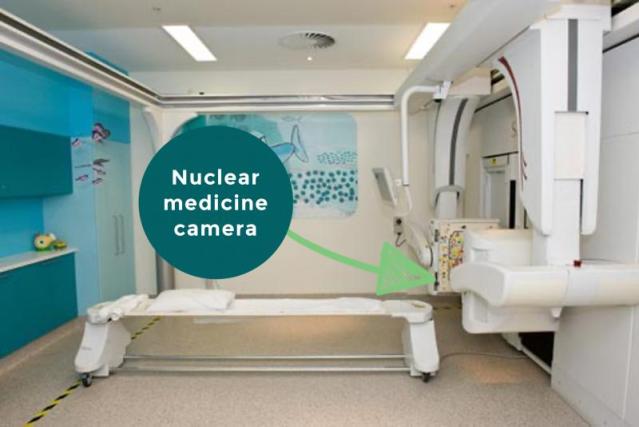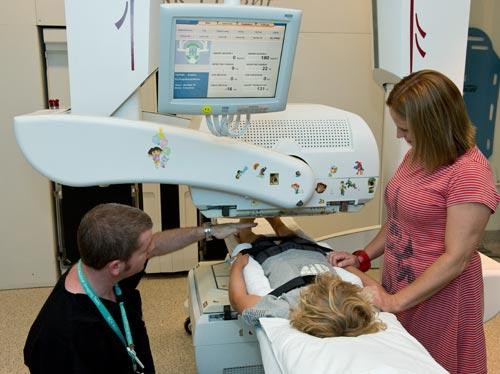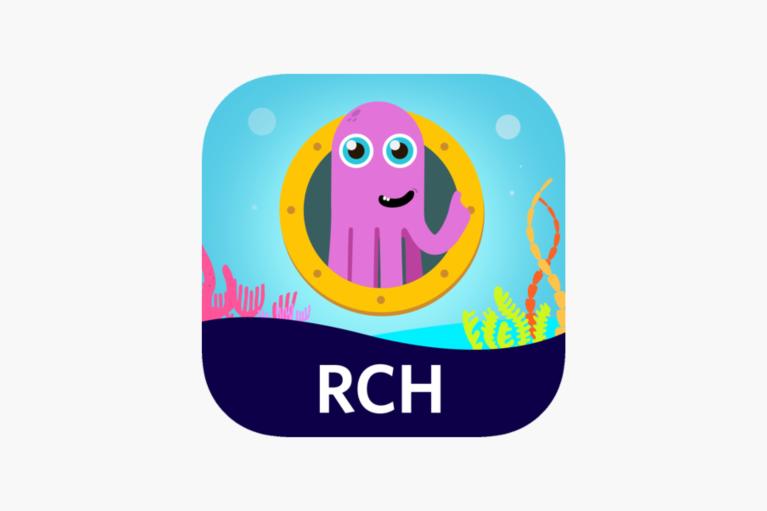A short video for children about what to expect before and during a nuclear medicine scan.
Source: The Royal Children's Hospital Melbourne
Key points about nuclear medicine scans in children
- nuclear medicine scans use tracer medicines that are injected into the body to provide images of organs and bones inside the body
- while nuclear medicine scans involve radiation exposure (like with x-rays and CT scans), the exposure is limited as much as possible
- nuclear medicine scan scans help doctors diagnose and monitor medical conditions, plan surgeries, and guide treatments
What is a nuclear medicine scan?
A nuclear medicine scan is a special type of scan that can take detailed pictures of different parts of the body. A doctor may recommend a nuclear medicine scan to help understand what's happening inside your child's body. There are many different reasons for having a nuclear medicine scan, including:
- to see how different organs in the body are functioning
- to look at the shape or structure of parts of the body
- for diagnosis, treatment, and management of diseases
You can have nuclear medicine scans of most body parts. They are most often used to look closely at the kidneys, digestive system and brain. They can also be used to examine bones.
How a nuclear medicine scan works
Nuclear medicine is a special type of medical imaging that uses radioactive medicines to take pictures inside the body. These medicines are injected into the body and emit a type of radiation called gamma radiation. Special cameras called gamma cameras are used to capture these pictures. Although nuclear medicine scans involve some radiation exposure, doctors try to keep it as low as they can to make sure it is safe for your child.
How long will my child’s nuclear medicine scan take?
Having a nuclear medicine scan can take between 15 to 45 minutes - depending on what type of pictures your child needs. Sometimes you will need to wait for a few hours between your pictures too.
Health professionals you'll meet during a nuclear medicine scan
The person who takes your children's pictures is the nuclear medicine scan technician. They can answer your questions and let your child know what they need to do.
You may also meet other people, such as a nurse or play therapist. A nuclear medicine specialist is the doctor who will look at your children's pictures after the nuclear medicine scan.
Nuclear medicine scan equipment
Nuclear medicine camera
The nuclear medicine scan camera is a big machine that can take pictures of the whole body. The camera is the 2 squares that move around your child to take the picture - they need to come close to your child, but won't touch them.

The nuclear medicine bed
There's also a bed to lie on, which has some seat belts, like in your car, to help keep your child safe.

Preparation for a nuclear medicine scan
Depending on your child's age, they may need sedation before their nuclear medicine scan. Most tamariki (children) having a nuclear medicine scan will need something called a tracer to help get better pictures during their scan.
Contrasts and tracers
Sometimes nuclear medicine scan pictures need something called a 'tracer'. This is a special liquid that helps the pictures look brighter.
If your child needs tracers, this will usually be written in your appointment letter. But sometimes, that decision is made at the time of the scan. If your child needs contrast, they may need to arrive earlier for their appointment. This gives the staff time to prepare and give the contrast before the scan.
Tracers are special liquids that go into the body and change the way the pictures look. There are lots of different types of tracers - some you drink and others that need to go into a vein with a little straw called a 'cannula' or a 'drip'.
Sedation
Some tamariki may need sedation before their scan. The doctor will discuss this with you before the scan. If your child needs sedation, your appointment will take longer.
What to do during a nuclear medicine scan
Keeping still
It is important that your child tries to keep still while they have their scan. If they move around too much, it can make the pictures blurry. It is OK for your child to breathe normally, blink and stay relaxed.
Holding their breath
If your child is having images taken of their chest or abdomen (tummy area), they may be asked to hold their breath for short periods. You can practise this before their appointment.
What to wear
Have your child dressed in comfy clothes. It's a good idea for your child to wear a short-sleeved top - they might need to take their jumper off for the pictures. They can still wear a jumper or jacket over the top until it's time for the scan to start.
Prepare your child for a nuclear medicine scan
Asking questions
Check the date and time of your child's scan and see if there is anything you need to do beforehand to prepare. If you have any questions about the scan, contact the hospital where the scan will take place. Ask to speak to the receptionist at the nuclear medicine scan department.
Play therapy
Some hospitals have play therapists that could be involved with your child and their scan. They can support your child with activities to help them feel more comfortable about getting a scan.
What to bring
Sometimes you may need to wait around before your child has their scan. It's a good idea to bring some things to keep your child busy such as books or toys. Your child may be able to take a favourite soft toy or comforter into the scan with them.
Preparing your child
Talking to your child and explaining to them why they are having a scan and what it will involve is important. How and when you do this will depend on their age and your own judgment. The Okee in Medical Imaging App can help you to prepare your child for their scan.
Okee in Medical Imaging App
The Royal Children's Hospital Melbourne has an app that you can download onto your phone or tablet. It has games that help your child to practise keeping still and holding their breath. It also has games that help explain the different types of scans.
The app is called Okee in Medical Imaging and is available from the app store
Please be aware that some of the content in the app is specific to Royal Children's Hospital Melbourne.
Acknowledgements
Content adapted and republished, with permission, from resources at The Royal Children's Hospital, Melbourne, Australia. Images subject to copyright.

